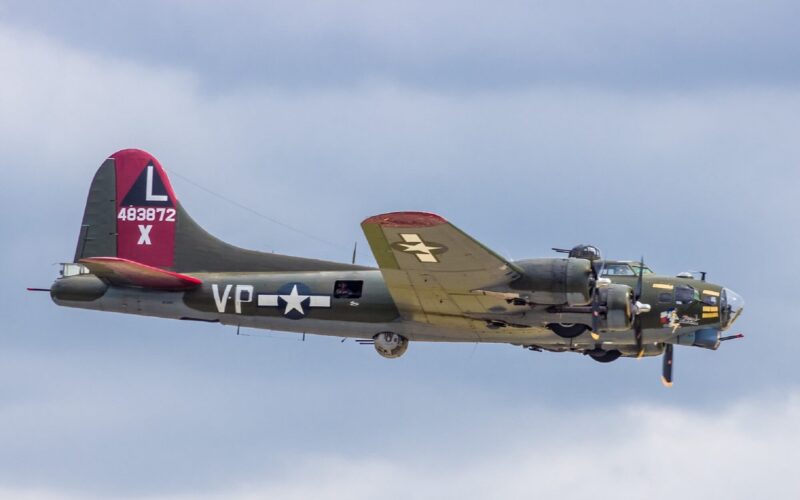Two WW2 warplanes collided at Dallas Executive Airport (RBD) on November 12, 2022. Six people were killed in the accident. Here is what we know so far.
Both aircraft belonged to the American Airpower Heritage Flying Museum, an affiliate of the Commemorative Air Force (CAF) that was organizing the show. Based at RBD, the association preserves a fleet of almost 200 antique aircraft, primarily US-made.
The two aircraft were part of a joint air display at the CAF Wings Over Dallas WWII Airshow. It included six aircraft in total, namely three bombers (a B-17, a B-24, and a B-25) and three fighters (two P-51 Mustangs and one P-63F Kingcobra).
While initiating a fly-by over RBD’s runway 31, the P-63F Kingcobra fighter, registration N6763, crossed the path of the B-17G Flying Fortress bomber, registration N7227C, from the back, impacting its left side and severing its tail. Both aircraft disintegrated mid-air.
The five crew members onboard the B-17 and the single pilot of the P-63 were killed. There were no ground injuries. A post-impact fire occurred on the airport ground and was extinguished by emergency services.
While most of the debris was scattered on airport property, some fell onto highway 67, located southeast of the airport. The road was temporarily closed to drivers. The fragments were recovered by the Dallas Police Department and turned over to the National Transportation Safety Board (NTSB).
An investigation was opened by the NTSB and the Federal Aviation Administration, with the assistance of the CAF. In a news conference on November 13, 2022, NTSB member Michael Graham highlighted the lack of black boxes, a recurring issue with vintage aircraft.
“Neither aircraft was equipped with a flight data recorder or a cockpit voice recorder,” Graham said. “If anybody in the public has any photos or videos we’d like to ask that you please share them with the NTSB. […] They’re actually very critical since we don’t have any flight data recorder data or a cockpit voice recorder.
Colisión en Dallas de un P63 contra un B17 el día de hoy hace pocas horas.
— Philly Proton (@PhillyPhoton) November 12, 2022
Noticiero local difunde nuevo ángulo del impacto.@AviacionEcuador@n_larenas
@aviaciongye pic.twitter.com/N57t8IKDqA
Two pieces of US aviation history
The Boeing B-17 Flying Fortress is one of the most famous US military heavy bombers to have been produced during the Second World War. More than 10,000 of the aircraft were manufactured in total. It could carry 2 tons (4,500 pounds) of bombs on long-range missions, and more than 3.6 tons (8,000 pounds) on short-range, and was armed with 13 50-caliber machine guns. This impressive weaponry earned it its nickname.
The B-17G involved in the crash was known as “Texas Raiders” and was one of the last B-17s still flying around the world. Despite being designed by Boeing, the 76-year-old aircraft was one of the bombers constructed at the Douglas Aircraft in Long Beach, California, in an effort to increase production during the Second World War. Delivered in July 1945, Texas Raiders never saw any combat action. Instead, it was acquired by the US Navy, which used it as an early iteration of Airborne Early Warning and Control.
The Bell P-63 Kingcobra was developed during the Second World War but was not accepted for combat used by the US military. Above 3,000 aircraft were produced, the majority of which were ferried to the Soviet Air Forces, including by the legendary women pilots of the WASP corps.
The P-63F, one of only two F models ever built, was constructed in 1946. While ferrying for an air show in 2013, the aircraft experienced fuel problems. Forced to land on its belly, it suffered damage and had to be repaired

